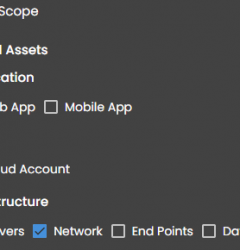

What is Full-Cycle Vulnerability Management?

Introduction
As much as cybersecurity measures and tools have advanced in the last few years, the vulnerabilities have been on the rise too. With technology spreading like wildfire in all aspects of our life, we need a one-stop solution that scans for the vulnerabilities and manages potential risks to a business’s infrastructure.
Full-cycle vulnerability management is an attempt to do just that. Full-cycle vulnerability management is a cybersecurity process that covers the entire lifecycle of vulnerabilities, from identification and assessment to remediation and monitoring.
The goal of full-cycle vulnerability management is to reduce an organization’s overall risk by identifying, assessing, and remedying cybersecurity vulnerabilities on time. By doing so, organizations can minimize the impact of cybersecurity incidents and breaches.
Steps In Full-cycle Vulnerability Management
Full-cycle vulnerability management programs typically consist of the following steps:
- Identify vulnerabilities: Conduct regular scans of your systems and networks to identify vulnerabilities. Vulnerability scanners can help you automate this process.
- Assess vulnerabilities: Once identified, assess the severity of each vulnerability and prioritize them based on risk.
- Reporting vulnerabilities: Report the findings to key stakeholders, such as the cybersecurity team, system administrators, and senior leadership.
- Remediate vulnerabilities: Take action to remediate the most critical vulnerabilities first. This may involve patching, configuring security controls, or implementing workarounds.
- Monitor vulnerabilities: After remediation, continue to monitor vulnerabilities to ensure they are properly addressed and do not reappear. Regular scanning and monitoring can help you stay on top of new vulnerabilities that may arise.
- Verify vulnerabilities: Verify that vulnerabilities have been properly remediated and pose no further risk to the organization.
Full-cycle vulnerability management is an ongoing process that should be revisited regularly. By following these steps, you can help reduce your organization’s cybersecurity risks.
Benefits of Full-Cycle Vulnerability Management?

There are several benefits of implementing a full-cycle vulnerability management program:
- Reduced cybersecurity risks: By identifying and remedying vulnerabilities on time, you can reduce your organization’s cybersecurity risks.
- Improved incident response: A comprehensive vulnerability management program can help improve your organization’s incident response time and capabilities.
- Increased efficiency: By automating vulnerability scans and assessments, you can free up time for your cybersecurity team to focus on other tasks.
- Improved compliance: A full-cycle vulnerability management program can help you meet compliance requirements, such as those set by the Payment Card Industry Data Security Standard (PCI DSS), GDPR, etc.
Challenges of Full-Cycle Vulnerability Management
Despite the benefits, there are some challenges associated with full-cycle vulnerability management:
- Cost: Implementing a comprehensive vulnerability management program can be costly, particularly if you need to purchase new cybersecurity tools and resources.
- Time-consuming: A full-cycle vulnerability management program requires regular scanning and assessment, which can be time-consuming.
- Organizational buy-in: Getting organizational buy-in for a full-cycle vulnerability management program can be difficult. It is important to communicate the benefits of the program to key stakeholders.
Despite these challenges, full-cycle vulnerability management is a critical cybersecurity process that can help reduce an organization’s cybersecurity risks.
Conclusion
Full-cycle vulnerability management is a cybersecurity process that covers the entire lifecycle of vulnerabilities, from identification and assessment to remediation and monitoring. The goal of full-cycle vulnerability management is to reduce an organization’s overall risk by identifying, assessing, and remedying cybersecurity vulnerabilities in a timely manner. By doing so, organizations can minimize the impact of cybersecurity incidents and breaches.















Recent Comments